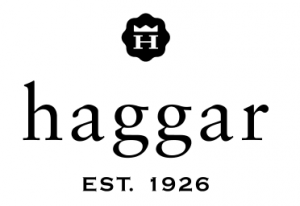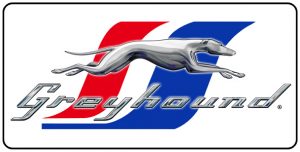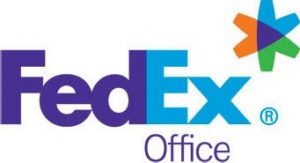 Born in 1892, J. M. Haggar established Haggar Clothing in 1926 at the age of thirty-four. At the age of thirteen, he migrated from his home in Mexico and later moved to the United States some years later. Haggar started as a dish and window washer, but gradually advanced into the sales industry due to his prowess and interaction skills. By 1921, he was selling overalls in Louisiana, Texas for a company based in Missouri. During this period, he realized that selling similar products at a fixed price was more profitable, as opposed to selling different products for varying profit margins. J. M. Haggar had saved enough funds to enable his establish his own business. He, therefore, set up shop and begun producing and selling high-quality pants for men. Haggar Clothing Co. started from a one-room office, steadily growing from a men’s dress pant manufacturer to become the most renowned brand in the market. The company had its headquarters in Dallas, Texas.
Born in 1892, J. M. Haggar established Haggar Clothing in 1926 at the age of thirty-four. At the age of thirteen, he migrated from his home in Mexico and later moved to the United States some years later. Haggar started as a dish and window washer, but gradually advanced into the sales industry due to his prowess and interaction skills. By 1921, he was selling overalls in Louisiana, Texas for a company based in Missouri. During this period, he realized that selling similar products at a fixed price was more profitable, as opposed to selling different products for varying profit margins. J. M. Haggar had saved enough funds to enable his establish his own business. He, therefore, set up shop and begun producing and selling high-quality pants for men. Haggar Clothing Co. started from a one-room office, steadily growing from a men’s dress pant manufacturer to become the most renowned brand in the market. The company had its headquarters in Dallas, Texas.
His first son Ed joined the business in the early 1930s. The enterprise’s products were then sold to numerous chain stores with no brand name attached. As at 1938, Haggar Clothing commanded a greater portion of the market specializing on menswear. During this period, the company introduced wash & wear pants, pre-cuffed pants, forever-prest pants, elastic waist pants and wrinkle-free cotton casual pants. This led to the need for a brand, of which the company began introducing brand names under E.R. Haggar’s direction. Haggar Clothing Co. went the extra mile to advertise their products on national TV and magazines, making it the first company to adopt UPC and IDE technologies, as well as invent the size strip sticker, ship pants pre-hung, and even sell pants and jackets as suit separates. Under their brand, this company also developed the highly successful eco-friendly khaki outfits.
One of the first advertisements ever done by Haggar Clothing on television showed a pair of the forever-prest slacks crumpled and then run over by a steamroller. The pants were then picked up and shaken. They showed no sign of wrinkles, selling off as the first ever wrinkle-free men’s pants. The success of this advert led to a full-time commitment to advertising on television. The business entity became a sponsor to shows like Bronco, Naked City, Sugarfoot and Twelve O’clock High.
Haggar went on to popularize his newly invented polyester-and-wool permanent press pants in the late 1960s. The company then introduced the new popular leisure tops to match with its slacks in the 1970s. At the age of 50, the company’s sales rose during this year when the industry witnessed a general drop-off. Haggar’s competitor Levi Strauss took advantage of a gap in the market and applied the same strategy as Haggar. It introduced Dockers line, which filled the existing gap between casual and dressy. This snatched a substantial percentage of the market commanded by Haggar, who then responded by introducing a line of all-cotton pants.
Presently, Haggar Clothing Co. is the proud leading manufacturer of men’s dress pants in the entire United States for more than eighty-five years. The company currently has an active employee count of six thousand and generating $437.9 million in sales as at 1996.
 Going by the slogan ‘Go Greyhound and leave the driving to us!’, this company is headquartered in Dallas, Texas. Greyhound Lines was founded more than 103 years ago (1914), offering intercity coach services in alliance with some reputable organizations like Indian Trails, Trailways, Peter Pan Bus Lines, Jefferson Lines and others. Presently, the company has an operational fleet of 1,229 motor coaches. Most of these coaches are the G4500, MCI 102DL3, D4505 as well as the Prevost X3-45.
Going by the slogan ‘Go Greyhound and leave the driving to us!’, this company is headquartered in Dallas, Texas. Greyhound Lines was founded more than 103 years ago (1914), offering intercity coach services in alliance with some reputable organizations like Indian Trails, Trailways, Peter Pan Bus Lines, Jefferson Lines and others. Presently, the company has an operational fleet of 1,229 motor coaches. Most of these coaches are the G4500, MCI 102DL3, D4505 as well as the Prevost X3-45. FedEx Office, previously Kinko’s, is a subsidiary business entity that offers various office services including office print and shipping services. Founded in 1970 as Kinko’s, FedEx Office has its headquarters in Dallas, Texas. Presently, the company offers printing, photocopying, binding and shipping services to clients all over the world through the different chain of stores the operate. The entity rebranded its name more than three times, starting as Kinko’s, before renaming to FedEx Kinko’s, and now officially going by the name FedEx Office.
FedEx Office, previously Kinko’s, is a subsidiary business entity that offers various office services including office print and shipping services. Founded in 1970 as Kinko’s, FedEx Office has its headquarters in Dallas, Texas. Presently, the company offers printing, photocopying, binding and shipping services to clients all over the world through the different chain of stores the operate. The entity rebranded its name more than three times, starting as Kinko’s, before renaming to FedEx Kinko’s, and now officially going by the name FedEx Office.